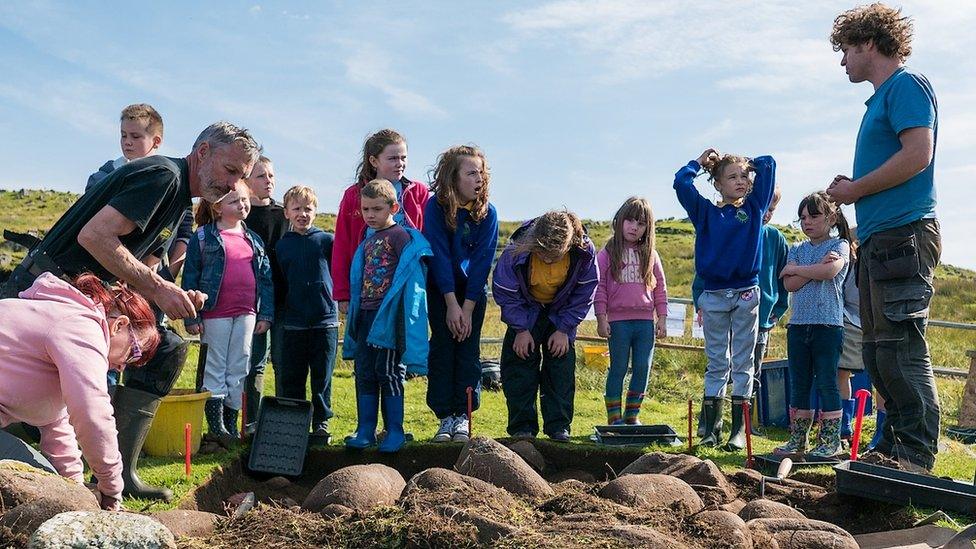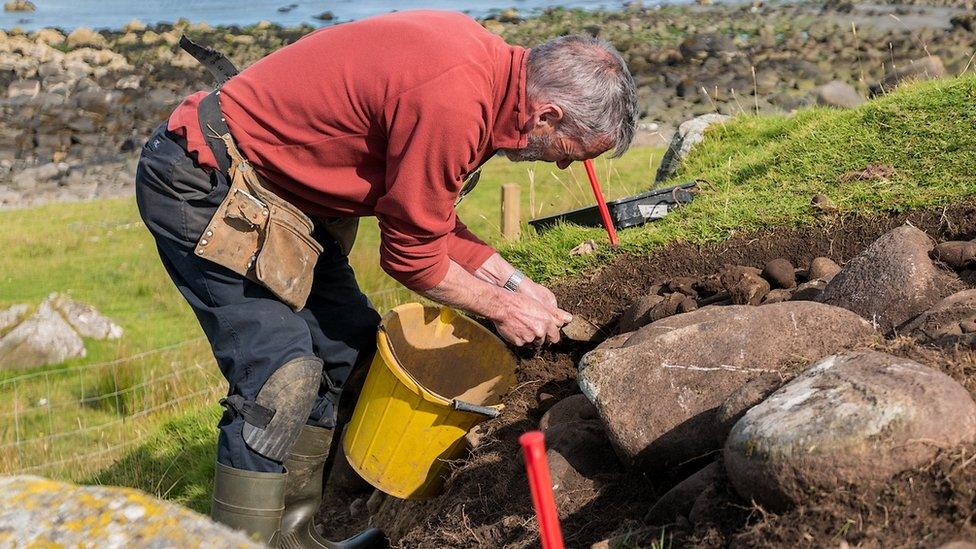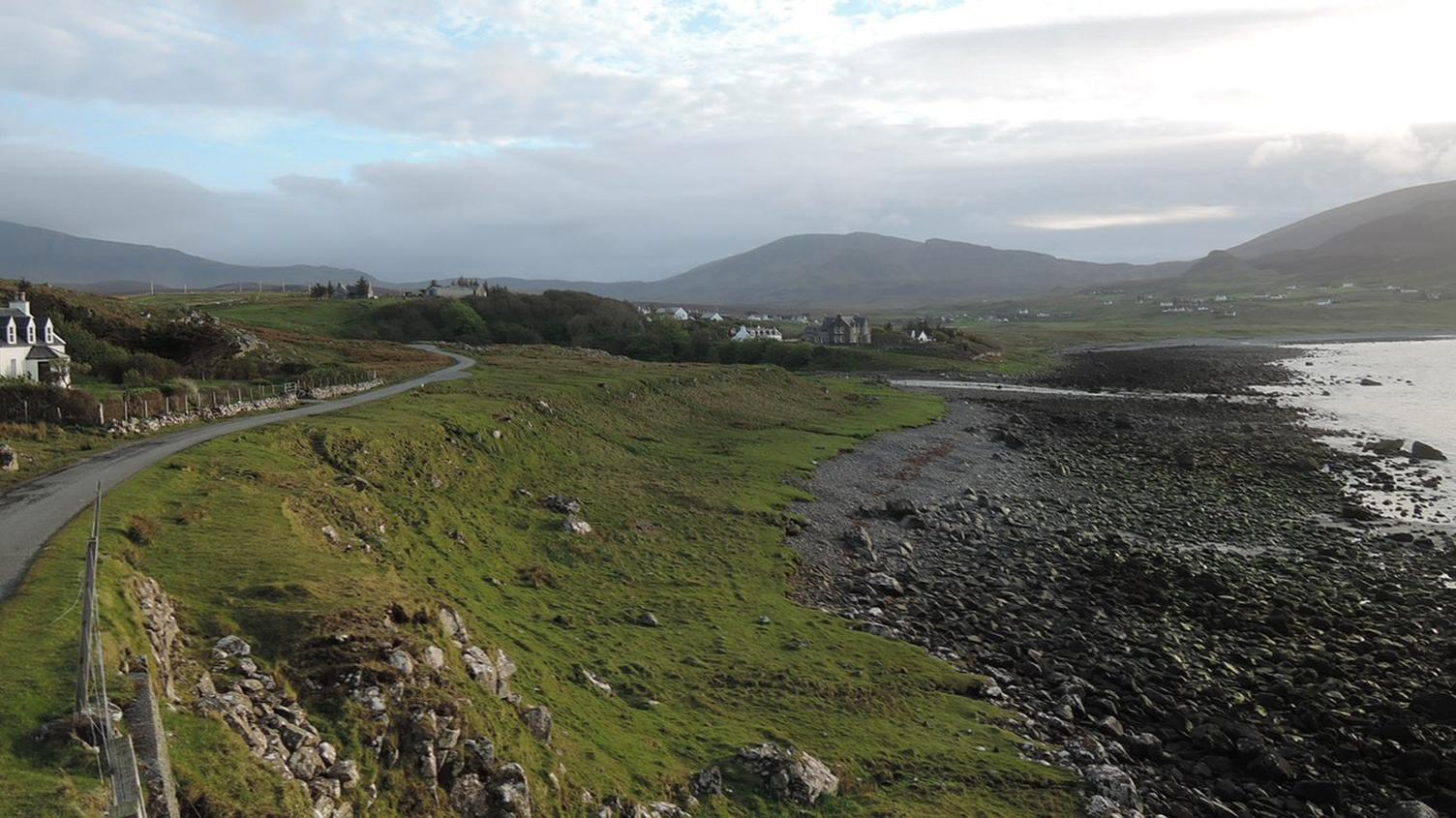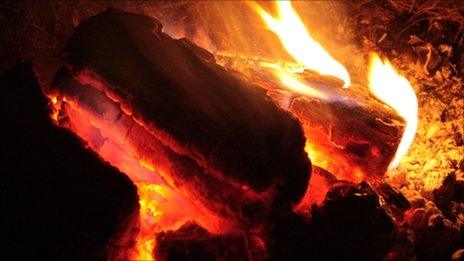Bone clue to Skye's ancient hunter-gatherers
- Published

The piece of worked bone found during last month's excavations
A piece of bone possibly handcrafted into a shape for use as a toggle or bead has been uncovered during an archaeological dig on Skye.
Archaeologists hope further analysis of the find will connect it to Mesolithic hunter-gatherers who lived on the island 8,000 years ago.
Flints were also found during September's dig above Staffin Bay.
Archaeologists worked with Staffin Community Trust, school pupils and volunteers in making small excavations.
The University of the Highlands and Islands' (UHI) Archaeology Institute led the investigation.

Schoolchildren at the dig site
Dan Lee, of UHI, said the site may have been one of several along Staffin Bay where hunter-gatherers gathered and worked stone and bone.
These people may also have hunted fish and mammals at the mouth of the nearby Kilmartin River.
Mr Lee said further excavations which could investigate if hearths or structural evidence survived would help define this period of activity at the site.
He said: "Hopefully we have enough material for radiocarbon dates and further excavation would be useful to better define the extent of the site.
"The UHI Archaeology Institute looks forward to working with Staffin Community Trust on future phases of the project".
Trust director Dugald Ross added: "The excavation has given us the opportunity of adding to our knowledge of early habitation of Staffin and although the circular foundation now appears to be a later date than initially thought, the lower levels have yielded material which is typical of the first groups of people to have arrived in Scotland after the last Ice Age."
During the Mesolithic period, also known as the Middle Stone Age, Scotland was inhabited by hunter-gatherers who lived off the wild resources of the land and sea.

Dugald Ross of Staffin Community Trust sifts through material during the excavation
- Published2 September 2015

- Published19 July 2011
